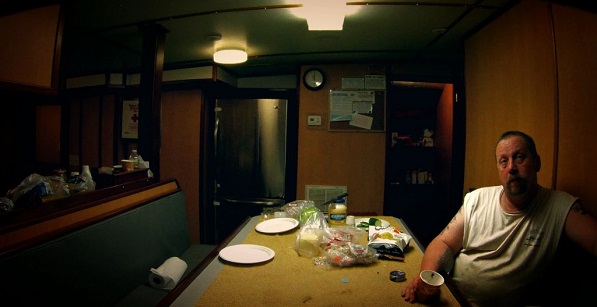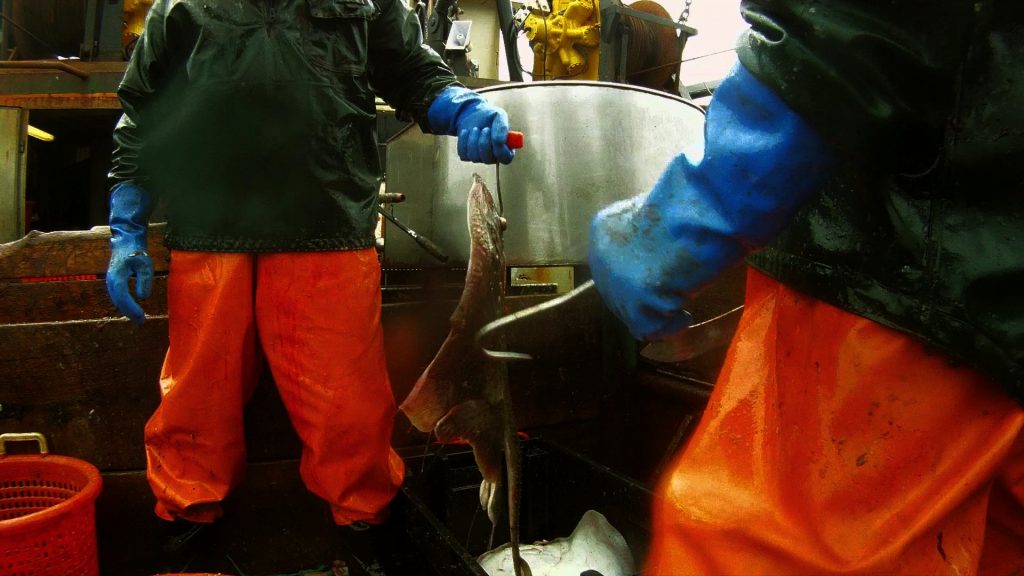There was a stretch when many documentaries were severely hampered by their reliance on cheap, consumer-grade video cameras. As the resolution of cameras has increased, a slickness has entered the field. For the most part, this increase in image quality is positive, even if a film like Leviathan also shows the expressive potential of cheaper cameras. Something more troubling seems to be happening to the field. Some of the more prominent American documentaries of 2013 aspired to the editing and pacing of cable news and Hollywood thrillers. Blackfish was a few edits away from qualifying as a snuff film; even without images of animal trainers being killed by orcas, it’s still “atrocity porn,” to use Anthony Kaufman’s term. No wonder it ended up being aired by CNN.
Richard Rowley’s Dirty Wars is somewhat better, but it seems to stem from the mindset that the story of the Obama administration’s use of drones needs a white male “star” to appeal to American audiences. Wisely, it chose investigative journalist Jeremy Scahill, who’s both a compelling screen presence and a reliable guide into morally and politically murky waters. Ultimately, I’m not sure that making a documentary in the style of Sydney Pollack’s Three Days of the Condor is all that illuminating, although I understand the desire to reach a wide audience with a critique of Obama from the left.
Documentary aesthetics were the subject of one of critic Scott Tobias’ final pieces for the AV Club. He argued that “the ‘movieness’ of documentaries rarely becomes an issue, which only encourages the stereotype of the documentary as a hearty gruel of talking heads and archival footage, spooned out as artlessly as the school lunches A Place At The Table criticizes so vociferously.” His strongest point is his rejection of blatant propaganda; he cuttingly reduces A Place At The Table to a series of bullet points about hunger and obesity in America. I agree that documentaries should express their politics with some measure of subtlety. However, I’ve seen too many films strive for “movieness” with gratuitous use of computer animation or flashy editing.
The series “Talking Head,” held at New York’s Anthology Film Archives in 2011, concentrated on films that consist of one person talking for their entire length. It showed that if the right person with the right story is chosen, their simple recollection of their life can be captivating. Wang Bing’s Fengming: A Chinese Memoir or Jean Eustache’s Numero Zero are just as powerful as Errol Morris’ The Thin Blue Line and Werner Herzog’s Lessons of Darkness. Talk can be cinematic too.
1. Leviathan (Véréna Paravel & Lucien Castaing-Taylor)
Leviathan, shot onboard on a commercial fishing boat off the coast of Massachusetts, is deceptively simple. It seems to go out of its way to avoid interpretation, instead plunging the spectator into an assaultive sensory experience. Yet for all the filmmakers’ stated intent to avoid political and ecological agendas, Greenpeace would probably approve of the film’s apocalyptic tone, which suggests that the sea’s bounty is running out.
2. The Act of Killing (Joshua Oppenheimer, Christine Cynn & Anonymous)
This documentary, in which American director Joshua Oppenheimer (working with a co-director who couldn’t use his name) asks Indonesian war criminals to reenact their murders and tortures on film, could have been a tasteless misfire. The concept seemed likely to produce a bizarre cult film, but the results indict the whole concept of escapist entertainment. All resemblance between Indonesia and America, particularly under the Bush administration, is intentional; indeed, it’s brought out by one of the film’s interview subjects.
3. The Machine Which Makes Everything Disappear (Tinatin Gurchiani)
Georgian director Tinatin Gurchiani placed ads seeking young people to audition for an apocryphal narrative film. She filmed the results, which are quite revealing in and of themselves, and then went on to shoot the lives of some of her subjects in more depth. The Machine Which Makes Everything Disappear avoids the usual clichés of Eastern European miserabilism, while still conveying an overall sense of malaise and tackling problems like alcoholism.
4. Valentine Road (Marta Cunningham)
Valentine Road uses the murder of fourteen-year-old gay student Larry King as the starting point for an examination of notions of guilt in American culture. Marta Cunningham finds a surprising lack of sympathy for King, whom many people think brought his death upon himself by flirting with his killer. The overt violence uncovered by Valentine Road is far from the most troubling thing in the film.
5. The Square (Jehane Noujaim)
Several early documentaries about the Arab Spring were hampered by a triumphant tone that now seems premature and short-sighted. The Square, which follows Egyptian protests over the course of two years, takes the opposite tack. Profiling a group of activists from varying ideological backgrounds, it shows a maddening situation in which a permanent revolution has become necessary.
6. Twenty Feet From Stardom (Morgan Neville)
The highest-grossing American documentary of the year, Twenty Feet From Stardom is an enormously entertaining depiction of the life and work of background singers. Filled with great music, it also speaks more penetratingly about race and gender than many films explicitly about those subjects. Many of its subjects, who are mostly African American women, wanted to become the next Diana Ross or Aretha Franklin, but found their career plans blocked by the music industry’s ingrained racism and sexism.
7. Three Sisters (Wang Bing)
Wang Bing remains one of the greatest filmmakers who’s largely unknown in the U.S.; like his nine-hour West of the Tracks, Three Sisters’ American exposure has been limited to a one-week New York run. He’s the great bard of the people left behind by China’s economic boom. Three Sisters shows life in an impoverished village for a family of girls, fully aware that it may be gentrified beyond recognition in a few years.
8. At Berkeley (Frederick Wiseman)
The four-hour At Berkeley shows the difference between Wiseman and ordinary documentarians. It includes a ninety-minute segment dealing with protests about rising tuition at UC Berkeley. Most filmmakers would turn that into a feature and leave the rest of the film on the cutting room floor. Wiseman opts for a wide lens on the school, taking in seemingly insignificant details and making them mean something.
9. Stories We Tell (Sarah Polley)
It’s become trendy to incorporate elements of fiction with documentary, something Polley’s hybrid film does quite well in its use of fictional Super-8 “home movies.” Exploring her parents’ relationship and possible infidelities, she takes the documentary close to romantic melodrama.
10. Narco Cultura (Shaul Schwarz)
Narco Cultura parallels two life stories: Mexican crime scene investigator Richi Soto and Mexican-American singer Edgar Quintero, who has become famous for music glorifying drug dealing. It’s the most flawed film on my list, as it offers no background to the violence erupting in Mexico’s war on drugs. But it earns its place, since it’s also the most gut-wrenching film I’ve ever seen about the cost of criminalizing drugs.
For the complete list of year-end lists on Keyframe, go to The Year in Film: 2013.
For the complete index of the films on these lists, go to 2013 Year in Review: Indexed.

















